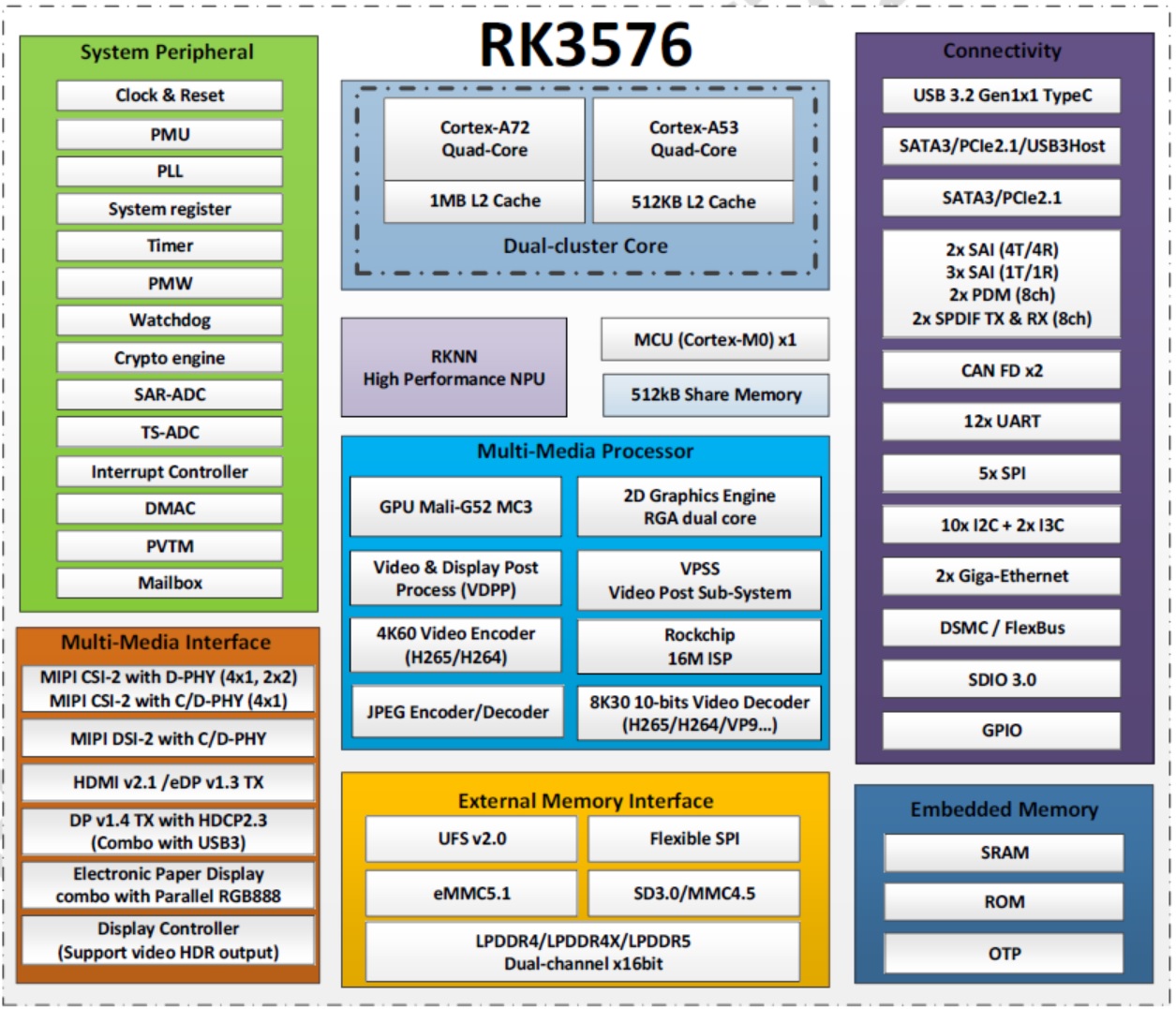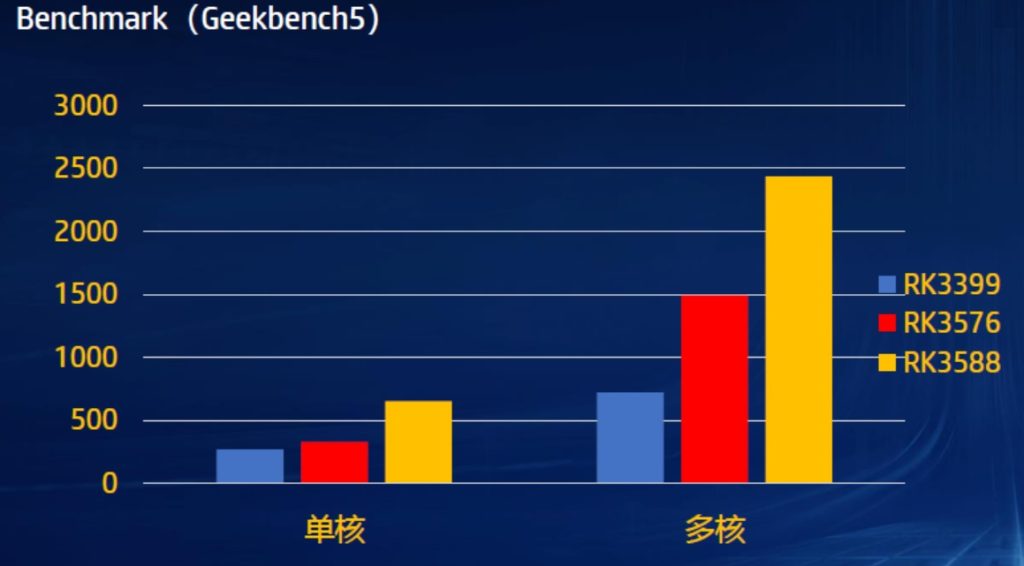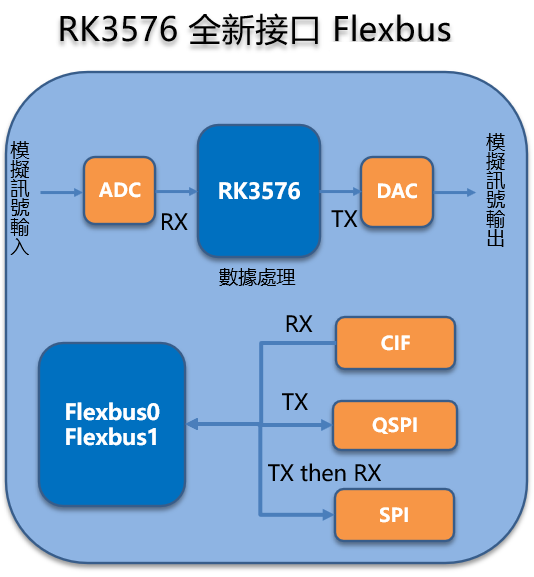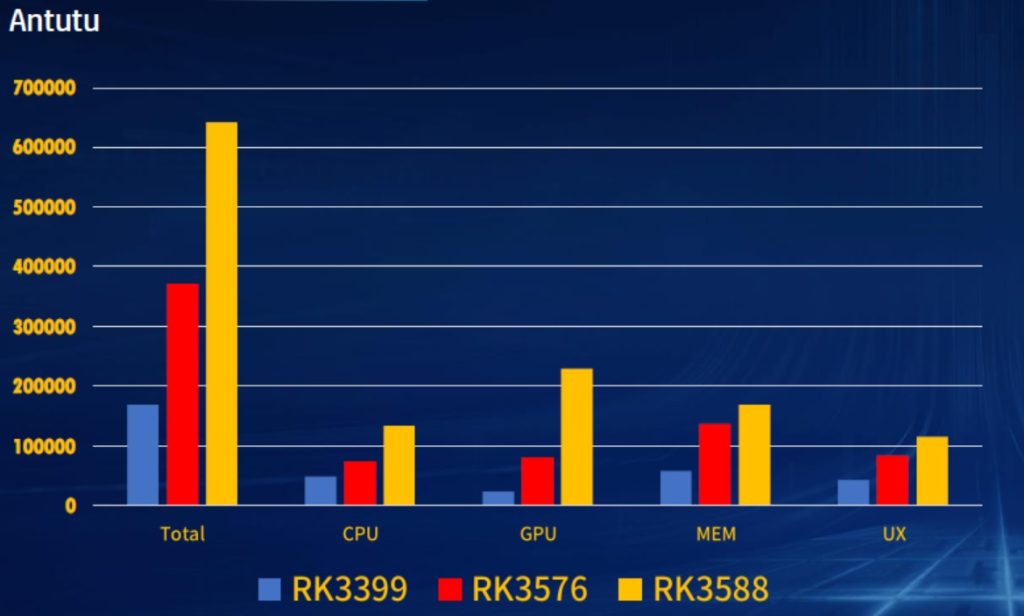ROCKCHIP RK3576: New Generation Platform Chip with Advanced Interfaces and Features
***NOTE: The features and specifications mentioned in this article may not fully reflect the actual product details. For the most accurate and up-to-date information, please consult the official documentation.***
Introduction to the Latest ROCKCHIP Innovation
ROCKCHIP’s RK3576 is a new general-purpose SOC product launched in the second quarter of 2024. Built on an advanced 8nm process, this chip operates with low CPU junction temperature (Tj), supporting applications without a heat sink. It simultaneously supports multiple peripherals and numerous IO ports to meet the requirements of various applications.

CPU Architecture and Performance
The RK3576 features an eight-core architecture with four ARM Cortex-A72 high-performance cores and four Cortex-A53 efficiency cores, plus an M0 co-processor. This configuration delivers computing power of 58K DMIPS.

- A72 cores: Maximum frequency up to 2.3GHz
- A53 cores: Maximum frequency up to 2.2GHz
- Supports Arm CoreLink CCI-500 cache coherent interconnect
- MCU co-processor: ARM Cortex-M0 with 400MHz main frequency
- Coremark benchmark performance: 658 points
The CPU architecture is designed for AMP (Asymmetric Multi-Processing) heterogeneous systems, making the RK3576 particularly suitable for display and control integration.
GPU Capabilities
The 3D graphics engine employs ARM Mali-G52 MC3 at 950MHz, supporting:
- OpenGL ES 1.1, 2.0, and 3.2
- Vulkan 1.2
- OpenCL 2.0
- AFBC (ARM Frame Buffer Compression)
- Dual-core Rockchip RGA V2.5 engine for 2D graphics processing

Neural Network Processing Unit (NPU)
The RK3576 incorporates ROCKCHIP’s self-developed latest iteration NPU:
- Dual-core NPU providing 6TOPS@INT8 computing power
- Support for parallel multi-tasking
- Computation support for INT4, INT8, INT16, FP16, BF16, and TF32
- Compatible with multiple deep learning frameworks including TensorFlow, TF-lite, PyTorch, Caffe, ONNX, MXNet, Keras, Darknet, and Android NN
Memory Support
Internal Memory
- BootROM supporting boot from FSPI Flash, eMMC, SDMMC, UFS, USB, and other storage devices
- USB OTG firmware download support
- 32KB PMU_SRAM for low-power applications and 512KB SYS_SRAM for general applications
External Memory
- LPDDR4/LPDDR4X with 4266Mbps bandwidth
- LPDDR5 with 4800Mbps bandwidth
- 32-bit data width, 2 RANK data blocks, maximum support for 16GB capacity
Storage Device Support
- eMMC V5.1, HS400, HS200, DDR50, data width 1/4/8 bit
- SD3.0, MMC V4.51
- New UFS2.0 support, dual-channel, each channel supporting HS-G3 5.8Gbps transmission rate
- FSPI flash interface supporting serial flash interfaces, NOR, NAND, pSRAM, SRAM devices
Video Codec Capabilities
Video Decoder
Supports parallel multi-stream decoding:
- H.264/AVC (main10, L5.2) at 4K@60fps
- H.265/HEVC (main10, L6.0) at 8K@30fps or 4K@120fps
- VP9 (Profile 0/2, L6.0) at 8K@30fps or 4K@120fps
- AVS2 (Profile 0/2, L8.2.120) at 8K@30fps or 4K@120fps
- AV1 (main10, L6.0) at 8K@30fps or 4K@120fps
Video Encoder
- Supports H.264/H.265 at maximum resolution of 4K@60fps
- RK3576 is currently one of only two chips besides RK3588 that can support 4K60 encoding
- Supports parallel multi-stream encoding
Display Interfaces
Video Input Interfaces
MIPI-CSI2
- Supports up to 5 MIPI CSI-2 interfaces
- 4 D-PHY V1.2 x 2lane, each lane 2.5Gbps or 2 x 4Lane flexible configuration
- 1 x 4Lane D-PHY or 3trio C-PHY
- D-PHY V2.0 with 4.5Gbps per lane
- C-PHY V1.1 with 2.5Gbps per trio
- Each interface supports four virtual channels, maximum 20 virtual channels total
- Built-in VICAP and ISP, MIPI CSI RX input data can be processed via VICAP, ISP
- ISP V3.9 supports 16M@30fps camera sensor
- RK3576 adds support for RGB-IR camera sensors
Video Output Interfaces
HDMI (combo with eDP)
- Supports HDMI V2.1, maximum output resolution 4K120
- Supports HDCP V2.3 and V1.4
eDP (combo with HDMI)
- Simultaneously supports eDP V1.3 and DP V1.2
- Maximum output resolution 4K60
- Supports HDCP V1.3
DP (combo with USB3)
- Supports DP V1.4, USB TYPE C DP ALT mode
- Maximum output resolution 4K120
- Supports HDCP V2.3 and 1.4
- New DP MST functionality for multi-video streaming
- Supports daisy chain and MST hub architectures
MIPI DSI
- Provides one MIPI-DSI2 V1.1 group supporting both D-PHY V2.0 and C-PHY V1.1
- Supports 4 lanes of D-PHY or 3 trios of C-PHY
- Maximum resolution 2560×1600@60Hz
- Maximum color depth 10bit
Parallel RGB/BT.656/BT.1120
- Maximum resolution 1920×1080@60Hz
- Maximum color depth 8bit
EBC
- Upgraded EBC output interface
- Supports E-ink interface for electronic paper displays
- Maximum resolution 2560×1600@60Hz
- 16-bit data width
- Maximum support for 32-level grayscale display
- Supports direct connection, LUT mode, and 3 window mode
- Supports window mode
Image Processor
- Provides 3 independent Video Ports, supporting three different screen displays
- Video Port0 supports 4K120Hz, 10bit data
- Video Port1 supports 2560×1400@60Hz, 10bit data
- Video Port2 supports 1920×1080@60Hz, 8bit data
- Each Video Port can arbitrarily use HDMI/eDP/DP/MIPI DSI-2 interface output
- Parallel output interface can only use Video Port1 and Video Port2
Peripheral Interfaces
Ethernet
- Built-in two MAC 10/100/1000 Ethernet controllers, supporting RGMII interface
- Supports full-duplex and half-duplex operation
- Both GMACs support IEEE.1588 with nanosecond-level precision
- New TSN (Time-Sensitive Networking) support
I3C
- I3C is one of the newly added interfaces in RK3576
- Provides two I3C interfaces, supports SDR mode, transmission speed up to 12.5Mbps, compatible with I2C
- Supports multi-master devices, up to 11 devices
- Supports software interrupts, hot-plugging
DSMC Double Data Rate Serial Interface
- New interface for PSRAM memory expansion and connecting FPGA interface devices
- 4 independent data channels, transmission rate 370MB/s
- Latency below 400ms
- Addressing modes: 8/16bit
- Supports 8/16 line mode, 3 clock modes (normal, always-on, no-edge-clk)
- Supports immediate DMA data transfer upon interrupt reception
CAN
- RK3576 provides 2 newly iterated CAN interfaces
- Supports CAN and CAN FD protocols
- New support for 8192-bit FIFO reception
FlexBus Interface
- RK3576 provides two FlexBus interfaces
- New FlexBus interface can simulate standard protocols like CIF/QSPI/SPI or non-standard protocols
- Data width configurable 2/4/8/16bit, clock frequency 100MHz
- Primarily used for interfaces requiring fast data input and output, and for developing proprietary protocols

UART Controller
- Provides 12 UART interfaces
- Built-in 2 independent 64-byte FIFOs for TX and RX
- Supports 5bits, 6bits, 7bits, 8bits serial data transmission and reception
- Each UART can support different input frequencies, maximum transmission rate up to 8Mbps
- All except UART0 support auto flow control mode and new RS485 automatic switching of send/receive direction
PWM Controller
- 16 PWM channels
- New support for High-Speed Signal Pulse Counter (HSC)
- Bidirectional counter and waveform generator that can produce waveforms without CPU dependency
Other IO Features
GPIO
- Provides 5 GPIO groups, each with 32 pins
- Each 32-pin group can be divided into 4 groups with one interrupt assignable to each
- RK3576 supports a total of 20 interrupts, significantly more than previous chips
- Enhanced flexibility and optimization for AMP heterogeneous solutions
Temperature Sensor (TSADC)
- Upgraded TS-ADC with more channels and improved precision
- Supports 6 channels, sensing temperature range -40~125°C, accuracy 1°C
- New support for user-defined mode and automatic mode
Successive Approximation ADC (SARADC)
- Upgraded SAR-ADC precision
- Resolution increased to 12 bits
- Maximum 1MS/s sampling frequency
- Provides 8 input channels
Package Type
- FCCSP698L (body: 16.1mm x 17.2mm; ball size: 0.3mm; ball pitch: 0.55mm&0.60mm&0.65mm mixed)
Industrial and Automotive Variants
- RK3576J: Industrial grade operating temperature -40~85°C, suitable for power concentrators/energy controllers/specialized collection terminals, HMI, PLC control, and various gateways
- RK3576M: Meets -40~85°C operating temperature and AEC-Q100 specifications, suitable for intelligent cockpit and other automotive application areas
